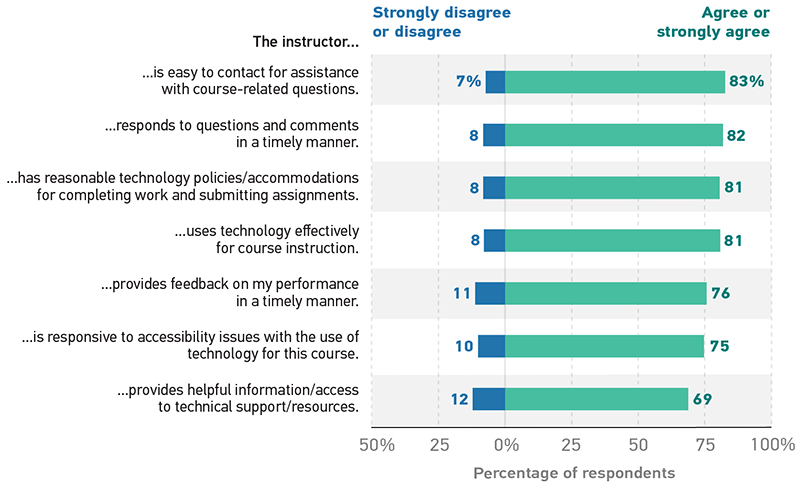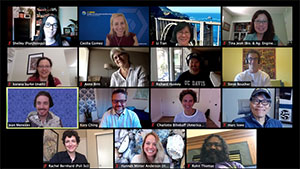Instructor Use of Technology

Keep calm and embrace technology. Subject-matter experts helped us identify seven instructor behaviors associated with the effective use of technology in teaching, and we asked students to evaluate those behaviors for the courses in which they were learning the most (figure 2). Students reported that their instructors communicated effectively and demonstrated a reasoned and reasonable approach to technology use in their courses. In terms of communication, most students agreed or strongly agreed that their instructors were easy to contact, responded to questions and comments in a timely manner, and provided feedback in a timely manner. Students also said their instructors used technology effectively for instruction, had reasonable technology policies, addressed technology-related accessibility issues, and provided students with information or access to technical support and resources. Modality had an impact on student ratings of their instructors' use of technology: students in synchronous courses rated instructor communication efforts and technology practices slightly higher than did students in asynchronous ones (by around 4 percentage points for most areas of evaluation).
Peers You Can Connect With

Asynchronous Educational Development Accelerates Course Transformation
University of California, Davis
The ACCELERATE Fellows program at UC Davis was designed to inform course transformation efforts for faculty at various stages of the process with a focus on equity and inclusion. To help instructors and teaching assistants prepare for remote teaching, the Center for Educational Effectiveness (CEE) developed a self-paced, fully online version: ACCELERATE Asynchronously. It supports the creation of inclusive and equitable e-learning environments during the transition of face-to-face courses to online courses. Since its launch in fall 2020, the program has serviced 5 times the number of participants as 10 previous iterations of the synchronous version combined.